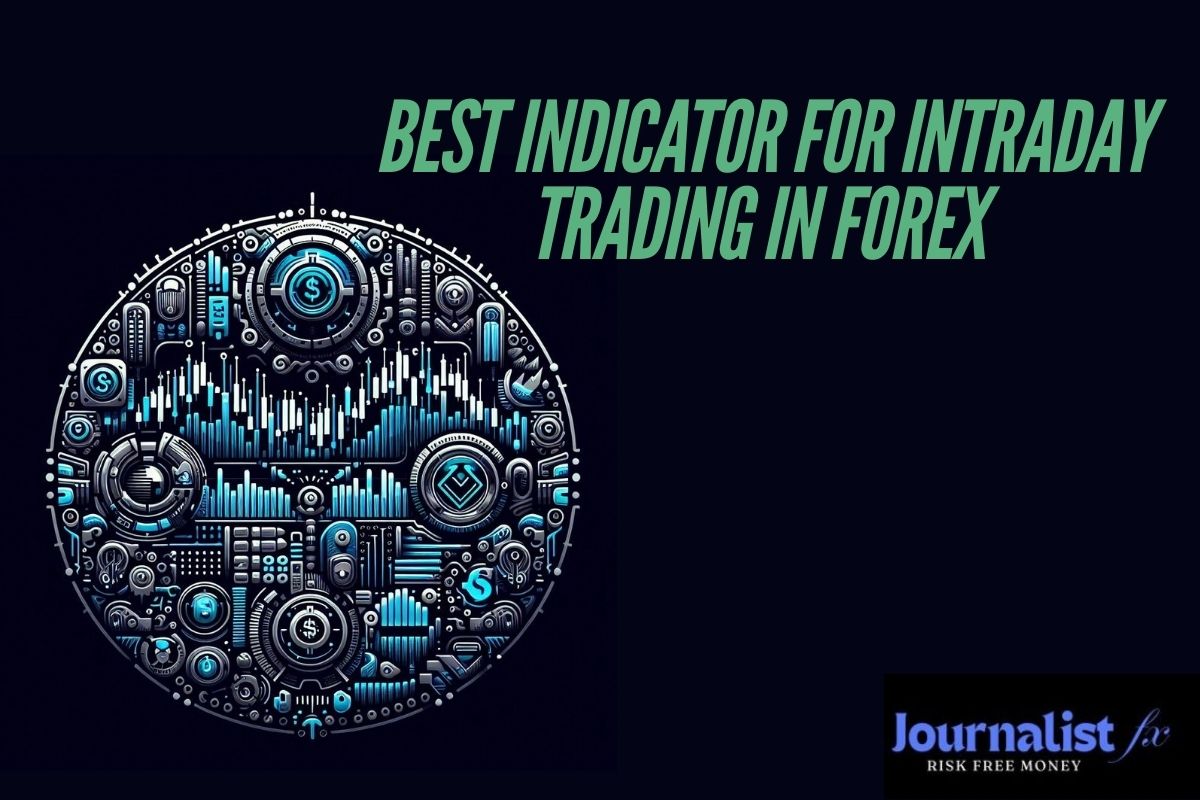The Forex market has attracted many traders from around the world. The volatile market generates immense opportunities with rapid daily price changes. In this chaotic environment, only traders who have done their homework can succeed. Homework in terms of building strategies by applying market tools and risk management. Slowly and steadily, a trader can become a forex god. Traders get involved in different trading styles to earn sustainable money from the market. Some go for short-term trades, and some for long-term. In this blog, we will be discussing the best indicators for intraday trading.
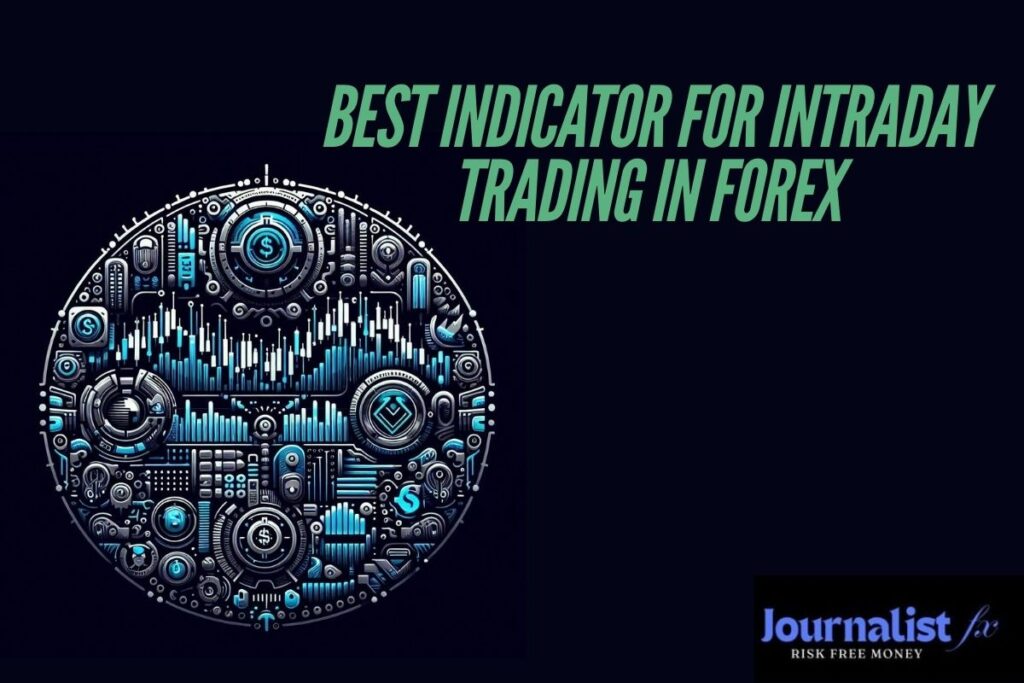
What are Forex indicators?
- Financial and trading markets are volatile and sensitive. Majorly, they run on a pattern or trend. Many market forces work alongside them to direct the market.
- Understanding them can become overwhelming sometimes. It can put a trader in challenging situations regarding the position of a trade.
- The market has developed various technical tools that share this immense burden with the traders. With the help of these tools, a trader can earn profits and prepare for risk management.
- Forex indicators are mathematical tools that use historical price, volume, or other data of an asset (currency pairs). They can help a trader make better decisions in the forex market.
How They Help
- To identify and analyze market trends.
- Forecast potential price movements.
- Identifying key entry and exit points of a trade.
Categories of Forex Indicators
Traders use individual forex indicators for comprehensive analyses in the market. They more often combine multiple indicators to ensure the accuracy of their forex strategies.
Did you know? With the effective use of these indicators, traders get a clear view of market trends. It can improve traders’ trading experience by helping them in various ways.
| Type of Indicators | Use |
| Trend Indicators | 1. Forex traders need to know the market trend before making a move. 2. Trend indicators help to identify the overall trend direction, which can be an uptrend, a downtrend, or sideways. 3. They are helpful in a trending market and help traders identify whether a particular trend is going to continue. The best trend indicators are MACD and ADX. |
| Volatility Indicators | 1. The Forex market is highly volatile, so this indicator helps traders to make a trade in a volatile situation. 2. This indicator can assess the price change in a given timeframe. It provides an idea to the trader of how quickly prices are moving. The best volatility indicators are Bollinger bands and ATR. |
| Momentum Indicators | 1. Traders use these indicators to measure the speed or strength of price movement. 2. It also helps to determine whether the trend is gaining or losing momentum. 3. This tool also helps to identify overbought or oversold conditions. The best momentum indicators are the RSI and Stochastic Oscillator. |
| Volume Indicators | 1. It is difficult to gauge the volume in the forex market as it is not centralised. 2. Some tools approximately predict the volume based on market activities. 3. Volume indicators are important to understand. They help determine if sufficient trading activity exists to sustain a trend. The best volume indicators are OBV and VWAP. |
| Support and Resistance Indicators | 1. Traders must know about the support and resistance points of the market. It will help them enter and exit a trade at the right time. 2. These indicators help identify the price levels. Where it previously struggled to move above (resistance) or below (support). The best support and resistance Indicators are Fibonacci Retracement and Pivot Points. |
MACD: Moving Average Convergence Divergence.
ADX: Average Directional Index.
VWAP: Volume Weighted Average Price.
OBV: On-Balance Volume.
ATR: Average True Range.
RSI: Relative Strength Index.
Best Indicators for Intraday Trading in Forex
Intraday trading in forex is prevalent among traders, giving them many opportunities. Technical tools can help a trader perform intraday trading. Many indicators come under technical tools, which are very popular among traders. They can capture changing price movements and provide timely signals to create a trading position. Let us discuss the best indicators for intraday trading in forex.
1. Moving Average (MA)

- Moving averages (MA) smooth out price data and help traders identify the trend in the market.
- Traders use MA to determine if the price is trending up or down. It also helps to determine potential support and resistance levels.
Types: 1. Simple Moving Average (SMA); 2. Exponential Moving Average (EMA).
Preference for Intraday: Traders prefer the exponential moving average for intraday trading. It reacts faster to price changes than the SMA.
2. Moving Average Convergence Divergence (MACD)
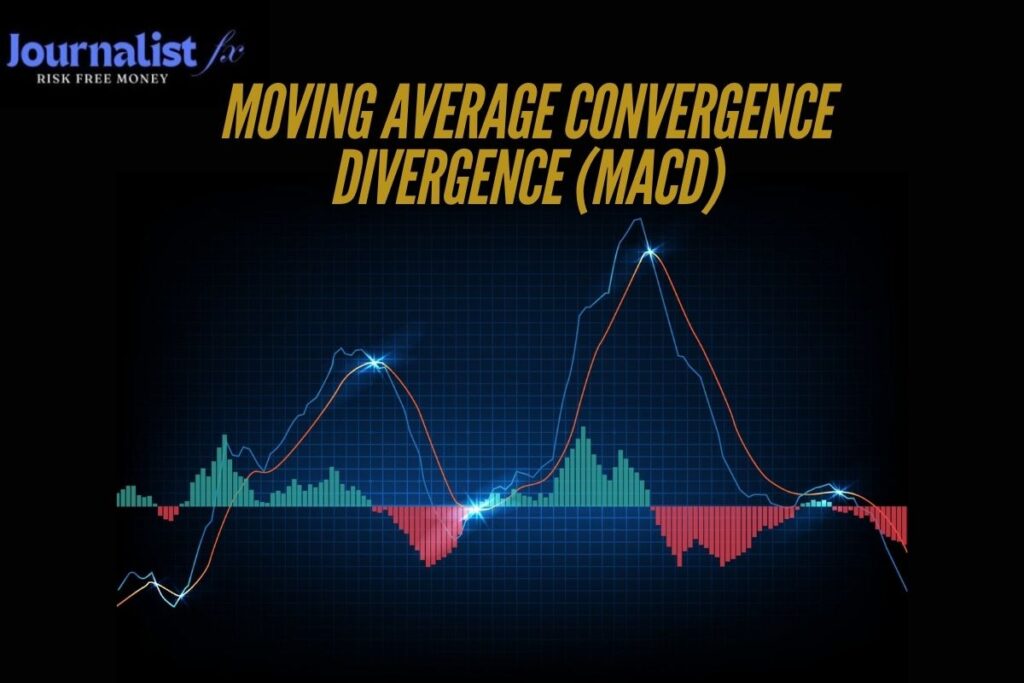
- The traders focusing on intraday trading use MACD to follow trends or spot a reversal.
- MACD is also used to establish a relationship between two EMAs. An included histogram indicates the strength of a trend.
Important tips for using the MACD line:
A buying opportunity: Suppose the MACD line crosses above the signal line.
A selling indication: If the MACD line crosses below the signal line.
3. Relative Strength Index (RSI)
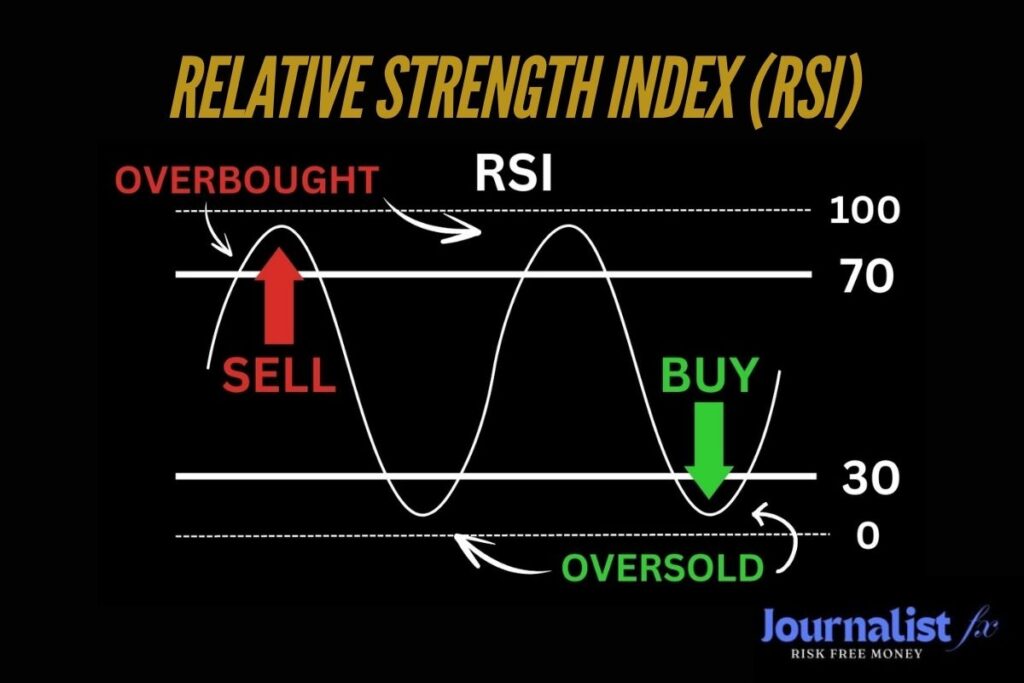
The Relative Strength Index is a momentum oscillator. It ranges from 0 to 100 & helps to identify overbought and oversold conditions.
Important tips for using RSI: Level above 70. It indicates that the currency pair is in an overbought zone. Traders can expect a pullback.
Levels below 30 show that a currency pair is in the oversold zone. Traders can expect a bounce.
4. Bollinger Bands

- Bollinger bands identify the volatility of the market. They also help to determine overbought and oversold conditions.
- It consists of three bands: one inner band (20-day MA) and two outer bands representing standard deviations.
Upper Band = Middle Band (20-period SMA) + (Standard deviation * Multiplier).
Lower Band = Middle Band (20-period SMA) – (Standard deviation * Multiplier).
Important tips for using Bollinger Bands: If the price moves near the upper band. It might be an overbought condition if it approaches the lower band. It is in an oversold condition.
5. Volume Weighted Average Price (VWAP)

- Traders use it to find the fair average price of a currency pair throughout the day.
- The tool considers both price and volume. The tool is very effective where volume can vary.
An important tip for using VWAP: It helps traders identify whether prices are trading above or below the average price. It will help them make entries and exits in the market.
6. Fibonacci Retracement
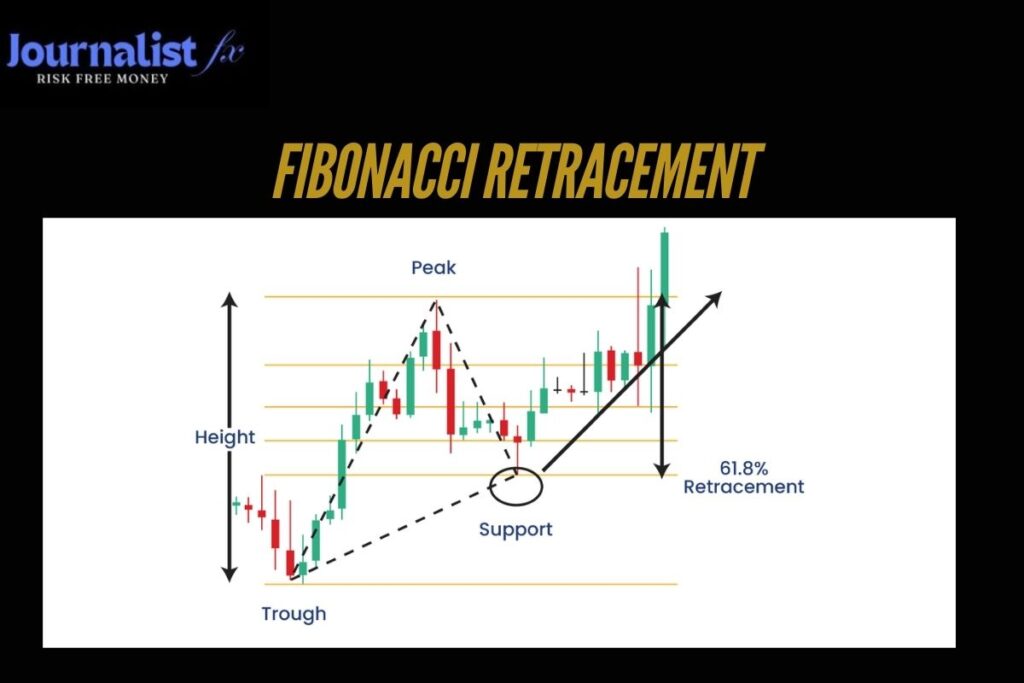
Fibonacci sequence: 23.6%, 38.2%, 50%, and 61.8%.
- Fibonacci Retracement levels are horizontal lines. They indicate potential support and resistance levels based on the Fibonacci sequence.
- Traders used these levels to identify reversal or continuation points.
An important tip for using Fibonacci Retracement: It helps intraday traders anticipate whether the price might pull back or extend during the day.
7. Average True Range (ATR)

- This indicator measures market volatility.
- It also shows how much a currency pair moves over a period.
- A high ATR indicates high volatility in the market.
- A low ATR indicates low volatility in the market.
ATR in Intraday: Helps traders adjust stop-loss and take-profit levels. It will also depend on the current market conditions.
8. Stochastic Oscillator
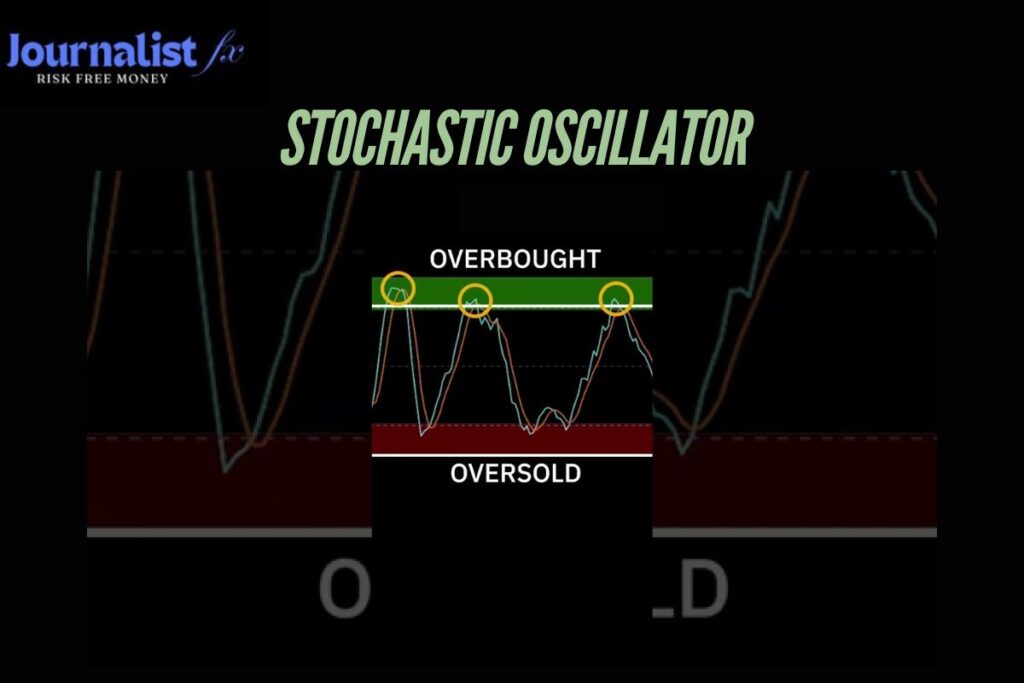
It is a momentum indicator that identifies oversold and overbought conditions. It ranges from 0 to 100.
Overbought conditions: Reading above 80.
Oversold conditions: Reading below 20.
Earn Profits in Forex by Using Intraday Indicators

Traders involved in intraday trading look to capitalise on rapid price movements. Besides technical knowledge, self-discipline plays a huge role. Combining self-discipline with technical understanding can help traders sustain themselves in the market. Let us understand how to earn profits in forex by using intraday indicators.
| Trends | Strategy | Pro-Tip |
| Moving Averages for following trends | 1. Traders combine long-term MA with short-term MA (5-period and 20-period EMA) to find the entry point of a trade. 2. Buying opportunity as the short-term EMA crosses above the long-term EMA. 3. Selling opportunity as the short-term EMA crosses below the long-term EMA. |
For quick intraday profit, follow the trend. Always trade as the trend directs to avoid unexpected reversals. |
| Reversal with Relative Strength Index | 1. RSI detects the momentum of the market. 2. It helps to identify overbought and oversold levels. 3. Over 70 is an overbought level, and below 30 is oversold. 4. Buying opportunities when RSI indicates below 30. 5. Selling opportunities when RSI indicates levels above 70. |
1. Adjust the RSI value to 80/20 in a strong trending market to avoid false signals. 2. For range-bound markets, traders can go with standard levels. |
| Fair Price Entries and Exits with VWAP | 1. VWAP shows the average trading price of an asset, weighted by volume. 2. Buying opportunities when prices are above VWAP. 3. Selling opportunities when prices are below VWAP. |
Combine VWAP with RSI or MACD for confirmation of entry and exit. |
| Momentum with MACD | 1. MACD shows the relationship between two MAs. 2. A histogram indicates the momentum’s strength. 3. Buying opportunities arise as the MACD line crosses above the signal line. 4. Selling opportunities arise as the MACD line crosses below the signal line. |
1. In a trending market, MACD crossovers are reliable entry points. 2. In a volatile market, combine it with support and resistance levels. |
| Spot Retracements with Fibonacci | 1. Fibonacci levels like 38.2%, 50%, and 61.8% are where prices may reverse. 2. Buying opportunities in a trending market wait for the price to pull back to a Fibonacci level of 38.2% or 61.8%. 3. Selling opportunities wait for a rally to a Fibonacci level. |
1. Use Fibonacci for entry points. 2. Set take-profit orders around the next level or near support/resistance levels. |
| Adjust Risk with Average True Range (ATR) | 1. ATR measures price volatility. It shows how much a currency pair moves within a set period. 2. Traders can use ATR to set stop-loss and take-profit levels based on the day’s volatility. |
In high volatility, traders widen their stops and markets to match market conditions. |
Trading Tips for Traders
- For confirmation, use a combination of indicators like Moving Averages with RSI.
- Avoid using too many indicators. It can lead to confusion and conflicting signals.
- There are different conditions to use an indicator in a trade. Not all of them work well in all situations. Use trend-following indicators in a trend-based market. Use RSI in the range-bound market.
- An essential tip for intraday trading: Avoid impulsive trades. Wait for clear signals and stick to your strategy.
- An essential tip for intraday trading: Keep a tight stop-loss. In intraday trading, the price can reverse in a short interval. This will help protect your money.
Conclusion
Traders choose different trading styles to get involved in the forex market. In this blog, we have tried to understand the best indicator for intraday trading in forex.There are different technical tools on the market with distinctive features. Indicators are one of the tools that help the trading experience of a trader. They help in identifying the trend and momentum. They are very essential to know for a profitable trade.

